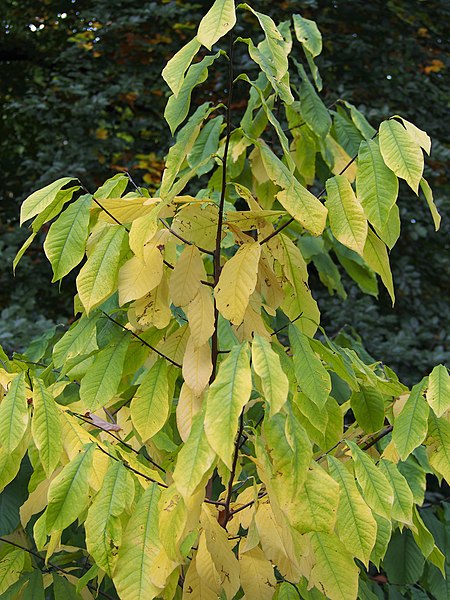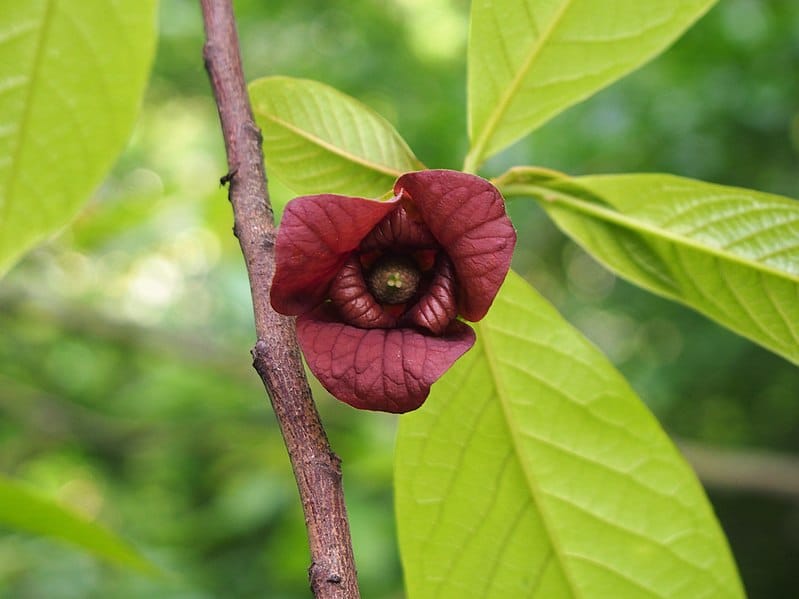Pawpaw Identification – Asimina triloba
Heads up
Pawpaw is a woody plant from the Annonaceae family widely distributed across Canada and the U.S. In its prime, the Pawpaw can be found standing up to 30 feet, with a breadth equally impressive. Its woody nature classifies it as both a shrub and a tree.
The Pawpaw has a moderate growth rate and can thrive in a wide range of environments, from the deep shades of forests to areas with full sunlight. Pawpaw can be found across a diverse range, from the coastal areas, mountains to the piedmont region.
Pawpaw: Key Parts in Photos



How to identify Pawpaw
The Pawpaw’s bark is a blend of light brown and gray. Over time, as the plant matures, this bark becomes fissured. The young stems and buds, on the other hand, possess a cinnamon-brown hue and are covered in pubescent hairs. The Pawpaw boasts oblong to obovate leaves, which are typically green in color. During the fall, these green leaves take on a golden hue, adding to the plant’s visual appeal.
Flowers bloom in the spring, usually between March and May. Their colors range from brown to a deep red. Each flower has six petals and is about 1-3 inches in size. However, these flowers have a unique, foul odor. This scent, although off-putting to some, serves a crucial purpose: attracting flies for pollination.
When ripe, their fruits transform into a delightful gold shade, sometimes even a rich green. The Pawpaw fruit is notably large, often exceeding three inches both in length and width. And it’s taste like a burst of banana custard flavor, a sweet delight that’s hard to forget. Just a little word of caution: while the mature fruits are a treat, consuming raw berries might not sit well with everyone.
